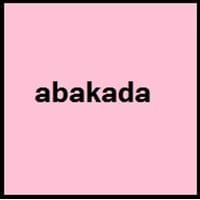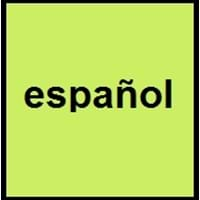Countries
Countries
Philippines
Andora, Argentina, Aruba, Australia, Belize, Bolivia, Brazil, Canada, Chile, Colombia, Costa Rica, Cuba, Dominican Republic, Ecuador, El Salvador, Equatorial Guinea, France, Gibraltar, Guatemala, Honduras, Jamaica, Latvia, Luxembourg, Mexico, Morocco, Namibia, Netherlands Antilles, New Zealand, Nicaragua, Norway, Panama, Paraguay, Peru, Philippines, Puerto Rico, Russia, Spain, Sweden, Switzerland, Trinidad and Tobago, Turkey, United Kingdom, United States of America, Uruguay, Venezuela, Western Sahara
Total No. Of Countries
1
14
46
1
National Language
Philippines
Spain
Second Language
Filipinos
Andora, Aruba, Australia, Austria, Belgium, Belize, Brazil, Bulgaria, Canada, Denmark, France, Germany, Ireland, Israel, Italy, Jamaica, Luxembourg, Morocco, Netherlands, Netherlands Antilles, New Zealand, Philippines, Poland, Portugal, Romania, Russia, Slovenia, Switzerland, Trinidad and Tobago, Turkey, United Kingdom, United States of America, US Virgin Islands
Speaking Continents
Asia, Australia
Africa, Asia, Europe, North America, South America
Minority Language
Australia, Canada, Guam, Hong Kong, New Zealand, Singapore, United Kingdom
Brazil, France, Germany, Italy, Japan, Morocco, United Kingdom
Regulated By
Komisyon sa Wikang Filipino, National Languages Committee
Asociación de Academias de la Lengua Española
Interesting Facts
- In 1593, "Doctrina Christiana" was first book written in two versions of Tagalog.
- The name "Tagalog" means "native to" and "river". "Tagalog"is derived from taga ilog, which means "inhabitants of the river".
- One of the world's most phonetic language is Spanish.
- Up to the 18th century, Spanish was diplomatic language.
Similar To
Filipino, Cebuano and Spanish Languages
French Language
Derived From
Not Available
Latin
Alphabets
Alphabets in
Tagalog-Alphabets.jpg#200
Spanish-Alphabets.jpg#200
Alphabets
25
7
27
9
Phonology
How Many Vowels
5
2
5
2
How Many Consonants
18
8
22
12
Scripts
Baybayin
Latin
Writing Direction
Left-To-Right, Horizontal
Left-To-Right, Horizontal
Hard to Learn
Language Levels
3
2
6
5
Time Taken to Learn
44 weeks
11
24 weeks
6
Greetings
Hello
Kamusta
hola
Thank You
Salamat po
Gracias
How Are You?
Kamusta ka na?
Cómo estás?
Good Night
Magandang gabi
Buenas Noches
Good Evening
Magandang gabi po
Bonne soirée
Good Afternoon
Magandang hapon po
Buenas Tardes
Good Morning
Magandang umaga po
Buenos Días
Please
pakiusap
Por Favor
Sorry
pinagsisisihan
triste
Bye
Paálam
adiós
I Love You
Iniibig kita
Te Quiero
Excuse Me
Ipagpaumanhin ninyo ako
Discúlpeme
Dialects
Dialect 1
Batangas Tagalog
Mexican Spanish
Where They Speak
Batangas, Gabon
Mexico
How Many People Speak
Not Available
105,000,000.00
5
Dialect 2
Bisalog
Cuban Spanish
Where They Speak
Philippines
Cuba
How Many People Speak
Not Available
11,000,000.00
8
Dialect 3
Filipino
Puerto Rican Spanish
Where They Speak
Philippines
Puerto Rico
How Many People Speak
90,000.00
30
3,900,000.00
9
Total No. Of Dialects
3
3
21
19
How Many People Speak
How Many People Speak?
73.00 million
24
489.00 million
3
Speaking Population
0.42 %
32
6.15 %
3
Native Speakers
28.00 million
29
410.00 million
2
Second Language Speakers
45.00 million
13
89.50 million
9
Native Name
Tagalog
Español
Alternative Names
Filipino, Pilipino
Castellano, Castilian, Español
French Name
tagalog
espagnol; castillan
German Name
Tagalog
Spanisch
Pronunciation
[tɐˈɡaːloɡ]
[espaˈɲol], [kasteˈʎano]
Ethnicity
Tagalog people
Not Available
History
Origin
1593
210 BC
Language Family
Austronesian Family
Indo-European Family
Subgroup
Indonesian
Romance
Branch
Not Available
Not Available
Language Forms
Early Forms
Proto-Philippine, Old Tagalog, Classical Tagalog, Tagalog
Old Spanish and Spanish
Standard Forms
Filipino
Pluricentric Standard Spanish
Language Position
58
99+
2
2
Signed Forms
Not Available
Signed Spanish
Scope
Individual
Individual
Code
ISO 639 1
t1
es
ISO 639 2
ISO 639 2/T
tgl
spa
ISO 639 2/B
tgl
spa
ISO 639 3
tg1
spa
ISO 639 6
Not Available
Not Available
Glottocode
taga1269
stan1288
Linguasphere
31-CKA
51-AAA-b
Types of Language
Language Type
Living
Living
Language Linguistic Typology
Object-Verb-Subject, Subject-Verb-Object, Verb-Object-Subject, Verb-Subject-Object
Subject-Object-Verb
Language Morphological Typology
Not Available
Fusional, Synthetic












